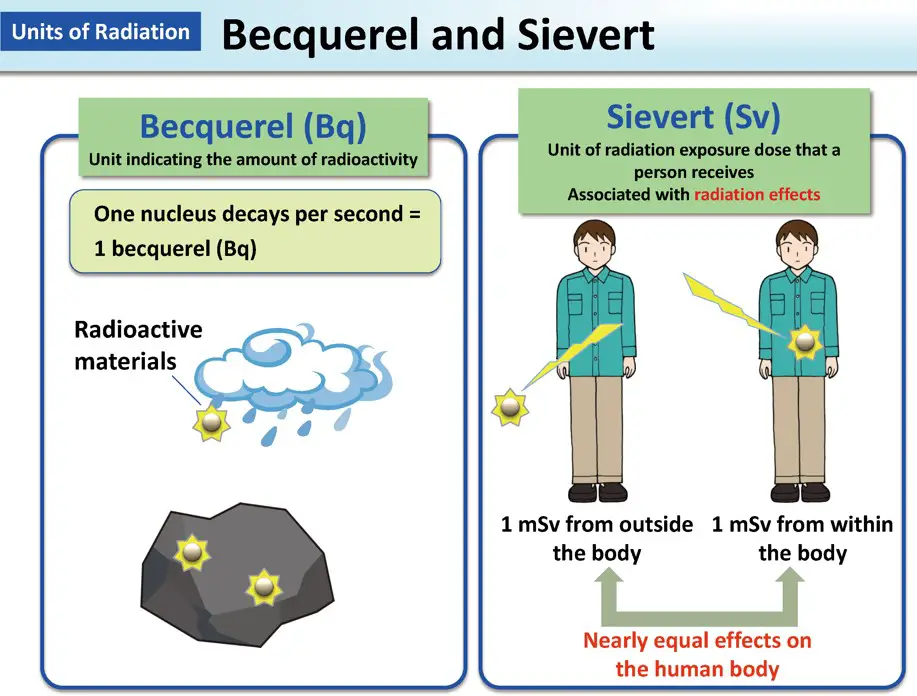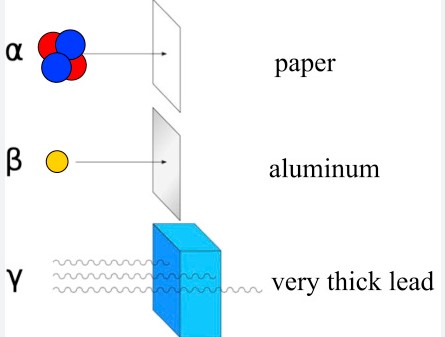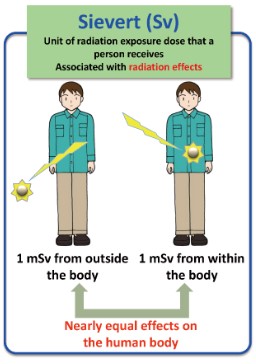Radiation surrounds us, emanating from both natural and man-made sources. Its invisible nature and complex effects on matter make measuring and understanding its presence crucial for health and safety. The science behind radiation measurement employs various units, each tailored to quantify specific aspects of radiation and its impact on the environment and biological tissue. Two such fundamental units are the Becquerel and the Sievert, essential in the fields of nuclear physics, medicine, and environmental safety.
The Becquerel (Bq) measures the rate at which a quantity of radioactive material decays, essentially quantifying the activity of radioactive substances. The Sievert (Sv), on the other hand, assesses the biological effects of radiation exposure on human tissue, offering a gauge for the potential health risks associated with radiation. While both units serve distinct functions, together, they provide a comprehensive understanding of radiation’s presence and its implications.
Exploring the differences between Becquerel and Sievert unveils the nuanced landscape of radiation measurement. This knowledge not only aids in navigating the practical applications of radiation safely but also enriches our understanding of how invisible forces shape our environment and health. With these units, professionals and the public can make informed decisions regarding radiation use, management, and protection.

Radiation Basics
What is Radiation
Radiation is energy that moves from one place to another. It can come in the form of waves or particles and exists all around us, from the ground we walk on to the sun’s rays that reach the Earth. There are two main types of radiation:
- Ionizing radiation: This type has enough energy to remove tightly bound electrons from atoms, creating ions. It includes forms like alpha particles, beta particles, gamma rays, and X-rays.
- Non-ionizing radiation: This type lacks the energy to ionize atoms but can still excite atoms and molecules, causing them to vibrate. Examples include ultraviolet (UV) light, visible light, infrared radiation, microwaves, and radio waves.
Measuring Radiation
Measuring radiation is crucial for health, safety, and environmental protection. The units of measurement provide a way to quantify radiation’s presence and its potential effects. Understanding these units allows us to:
- Assess exposure levels
- Implement safety standards
- Guide medical treatments
Becquerel Explained
Defining Becquerel
The Becquerel (Bq) is the SI unit for measuring the activity of radioactive material, named after the French physicist Henri Becquerel. One Becquerel is defined as one decay event per second. This unit helps quantify how much a radioactive substance is emitting radiation, providing a basis for safety and regulatory measures.
Application of Becquerel
Becquerel is used widely across various fields, including:
- Medical imaging and cancer treatment: To calculate the safe dosage of radioactive tracers or therapies.
- Nuclear power generation: For managing waste and fuel.
- Environmental monitoring: To track natural or man-made radioactive contamination.
Calculating Becquerel
Calculating the activity in Becquerel involves understanding the substance’s decay rate. The formula is straightforward:
��������(��)=������ �� ������/����(�������)Activity(Bq)=Numberofdecays/Time(seconds)
Examples:
- A sample that produces 100 decay events in 10 seconds has an activity of 10 Bq.
- If a substance emits 3000 decays in 60 seconds, its activity is 50 Bq.
Sievert Unveiled
Defining Sievert
The Sievert (Sv) is the unit of dose equivalent radiation, used to measure the impact of ionizing radiation on human tissue. Unlike the Becquerel, which quantifies radiation emitted, the Sievert assesses potential health risks, taking into account the type and energy of the radiation.
Sievert’s Importance
Understanding and measuring in Sieverts is vital for:
- Healthcare: Ensuring the safety of patients undergoing radiological procedures.
- Occupational safety: Protecting workers in industries with radiation exposure.
- Public safety: Setting exposure limits to protect the general population.
Calculating Sievert
Sievert calculations consider several factors, making them more complex than Becquerel calculations. The factors include:
- Type of radiation (alpha, beta, gamma, X-rays)
- Energy of the radiation
- Duration of exposure
The dose in Sieverts is calculated by multiplying the absorbed dose (in grays) by a quality factor (QF) that varies with the type of radiation:
����(��)=�������� ����(��)×��Dose(Sv)=Absorbeddose(Gy)×QF
For example:
- An exposure of 0.01 grays of gamma rays (QF=1) would result in a dose of 0.01 Sv.
- An exposure of 0.01 grays of alpha particles (QF=20) would result in a dose of 0.2 Sv.

Comparing Becquerel and Sievert
Unit Differences
The Becquerel and the Sievert serve different, yet complementary roles in the field of radiology and radiation safety. The Becquerel measures the rate at which a quantity of radioactive material decays, providing a quantification of its activity. In contrast, the Sievert measures the biological effects of radiation exposure on human tissue, taking into account the radiation type and its energy. This distinction highlights the Becquerel’s focus on the source of radiation, while the Sievert concentrates on its impact on living organisms.
Interrelation and Conversion
Although directly converting Becquerel to Sievert or vice versa is not straightforward, there is an interrelation between the two units. The conversion requires additional information, such as the type of radiation and the biological context of the exposure. For example, to estimate the dose in Sieverts received from a radioactive source (measured in Becquerels), one must know the energy emitted by the source and the efficiency of energy absorption by human tissue. This process underscores the complexity and necessity of considering multiple factors when assessing radiation exposure risks.
Practical Examples
- Medical Imaging: A technician uses the Becquerel to gauge the activity of a radioactive tracer used in PET scans, ensuring it’s sufficient to provide clear imaging without posing undue risk. The Sievert unit is then used to assess the patient’s exposure to ensure it’s within safe limits.
- Nuclear Power Plants: Workers monitor the Becquerel levels of waste to manage and store it safely. Meanwhile, they use Sievert measurements to monitor their own exposure to radiation, ensuring it remains below the maximum permissible dose.
Impact and Safety
Health Effects
Radiation exposure can lead to health effects ranging from acute symptoms, like skin burns and radiation sickness, to long-term consequences, including an increased risk of cancer. The Sievert plays a crucial role in quantifying these risks, allowing for the establishment of safety standards and protective measures. Understanding the potential health effects of radiation emphasizes the importance of accurate measurement and strict adherence to safety guidelines.
Regulatory Standards
International safety standards and guidelines for radiation exposure are set by organizations such as the International Commission on Radiological Protection (ICRP) and the International Atomic Energy Agency (IAEA). These standards are based on comprehensive research and are designed to minimize health risks by setting limits on acceptable levels of radiation exposure. These limits are often expressed in Sieverts, highlighting the unit’s importance in protecting public and occupational health against the potential dangers of radiation.
Radiation Protection
Minimizing radiation exposure and protecting against its harmful effects involve a range of strategies and tools, many of which rely on the accurate measurement of radiation in Becquerels and Sieverts. Some key strategies include:
- Time: Reducing the time spent near a radiation source decreases exposure.
- Distance: Increasing distance from a radiation source significantly reduces exposure levels.
- Shielding: Using materials that absorb or block radiation can protect against exposure.
These strategies, informed by the principles of radiation measurement, underscore the critical role of both Becquerel and Sievert in ensuring safety in environments where radiation is present.
FAQs
What is radiation?
Radiation is energy emitted from a source, traveling through space or matter. It comes in various forms, including electromagnetic waves like X-rays and gamma rays, and particulate forms such as alpha and beta particles. Radiation is a natural part of our environment but can also result from artificial sources like medical equipment and nuclear reactors.
How do Becquerel and Sievert differ?
The Becquerel measures the rate of radioactive decay, representing the quantity of radiation emitted by a radioactive material. The Sievert, however, quantifies the biological effect of radiation exposure on human tissue, considering the type of radiation and its energy. Essentially, Becquerel is about the source’s activity, while Sievert concerns the impact on living organisms.
Why are both units important?
Both units are crucial for ensuring safety and compliance in environments where radiation is present. Becquerel helps identify the level of radioactivity and manage radioactive materials, while Sievert aids in assessing health risks and establishing safety protocols. Together, they facilitate a balanced approach to handling and protecting against radiation.
Can you convert Becquerel to Sievert?
Direct conversion between Becquerel and Sievert is not possible as they measure different aspects of radiation. However, to assess the impact of a given radioactive source on human health, calculations involving both units are often necessary, incorporating factors like the energy of the radiation and the exposure duration.
Conclusion
The intricacies of radiation measurement and safety are encapsulated in the distinction between Becquerel and Sievert. By delineating the rate of radioactive decay and the biological effects of radiation exposure, respectively, these units offer a dual perspective essential for managing and mitigating the risks associated with radiation. Their application across various fields underscores the importance of a nuanced understanding of radiation’s effects on both the environment and human health.
As we continue to harness and encounter radiation in medical, industrial, and natural settings, the knowledge of Becquerel and Sievert becomes indispensable. It guides professionals in making informed decisions and adopting safety measures, ensuring that the benefits of radiation are utilized while minimizing its potential harm. This balance is fundamental to advancing technologies and preserving well-being in a world where invisible forces have tangible impacts.

